
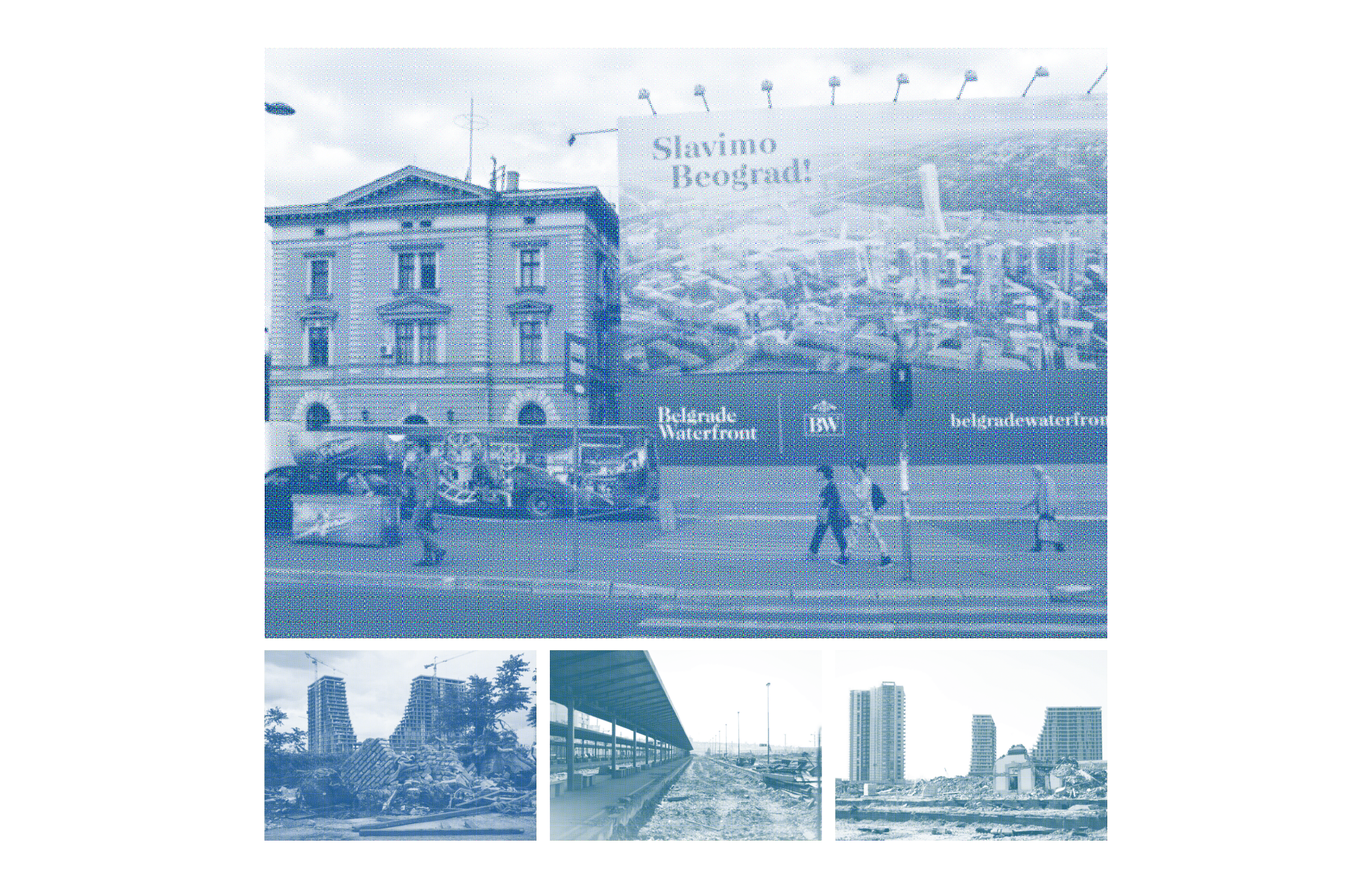


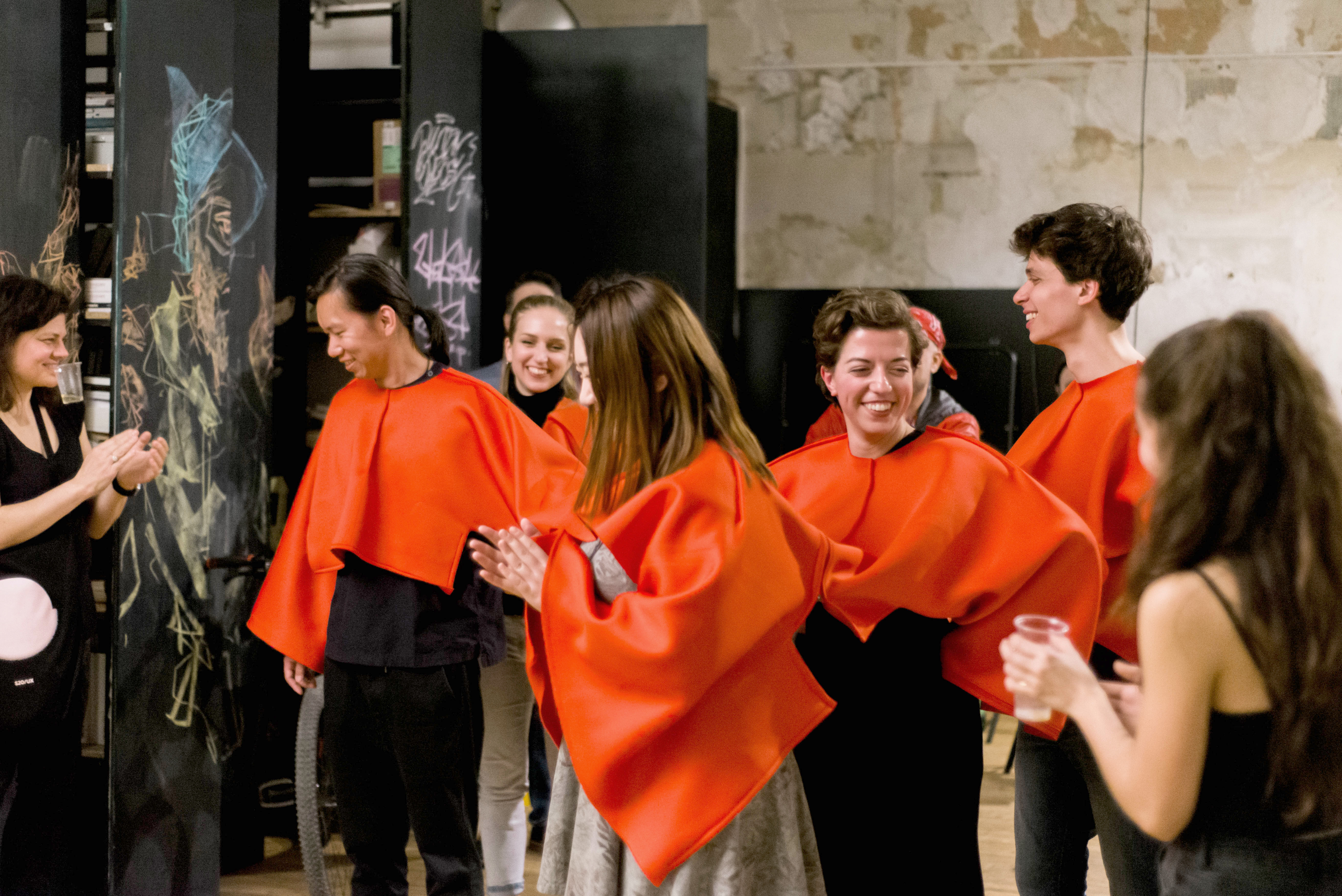
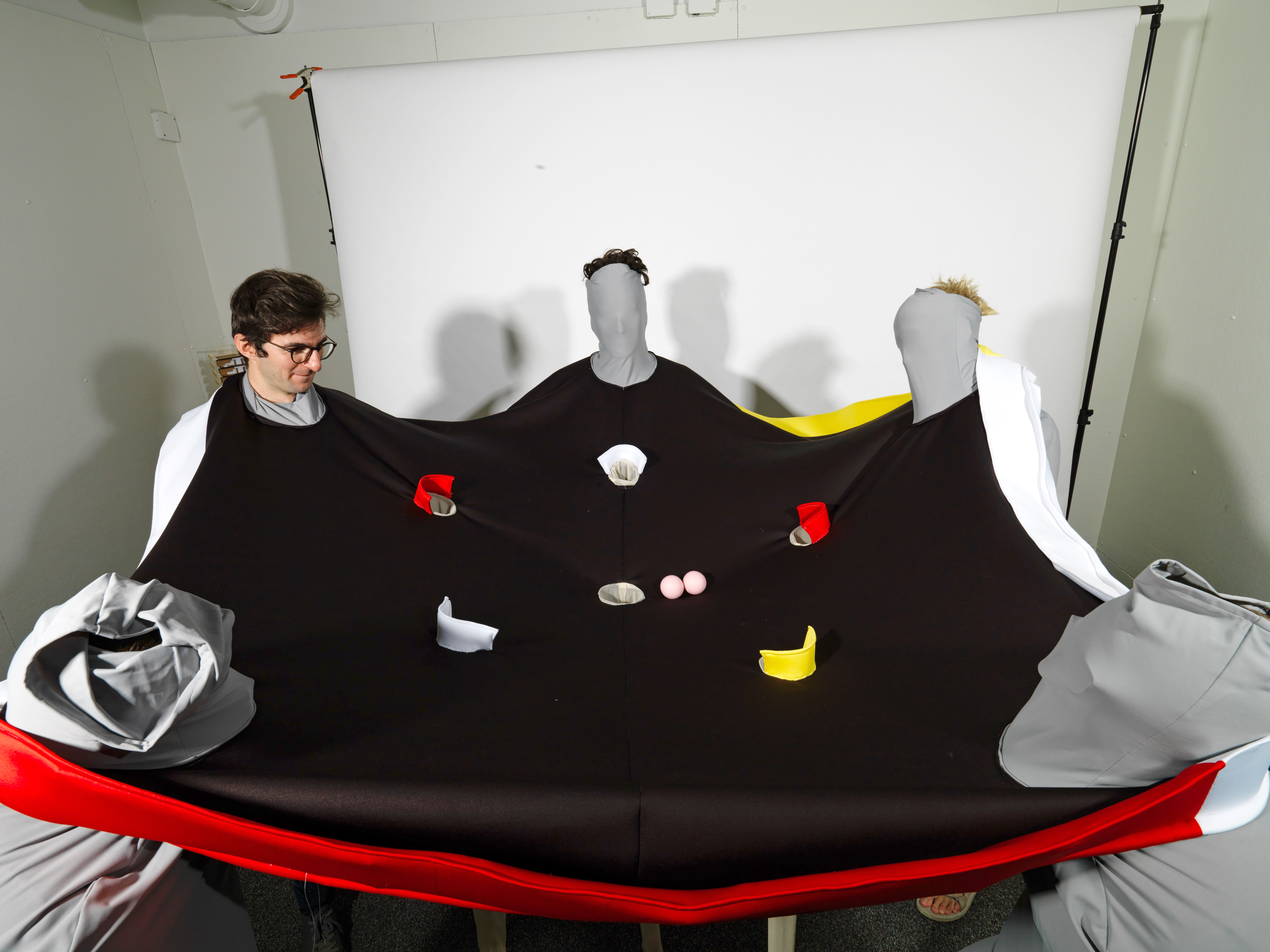
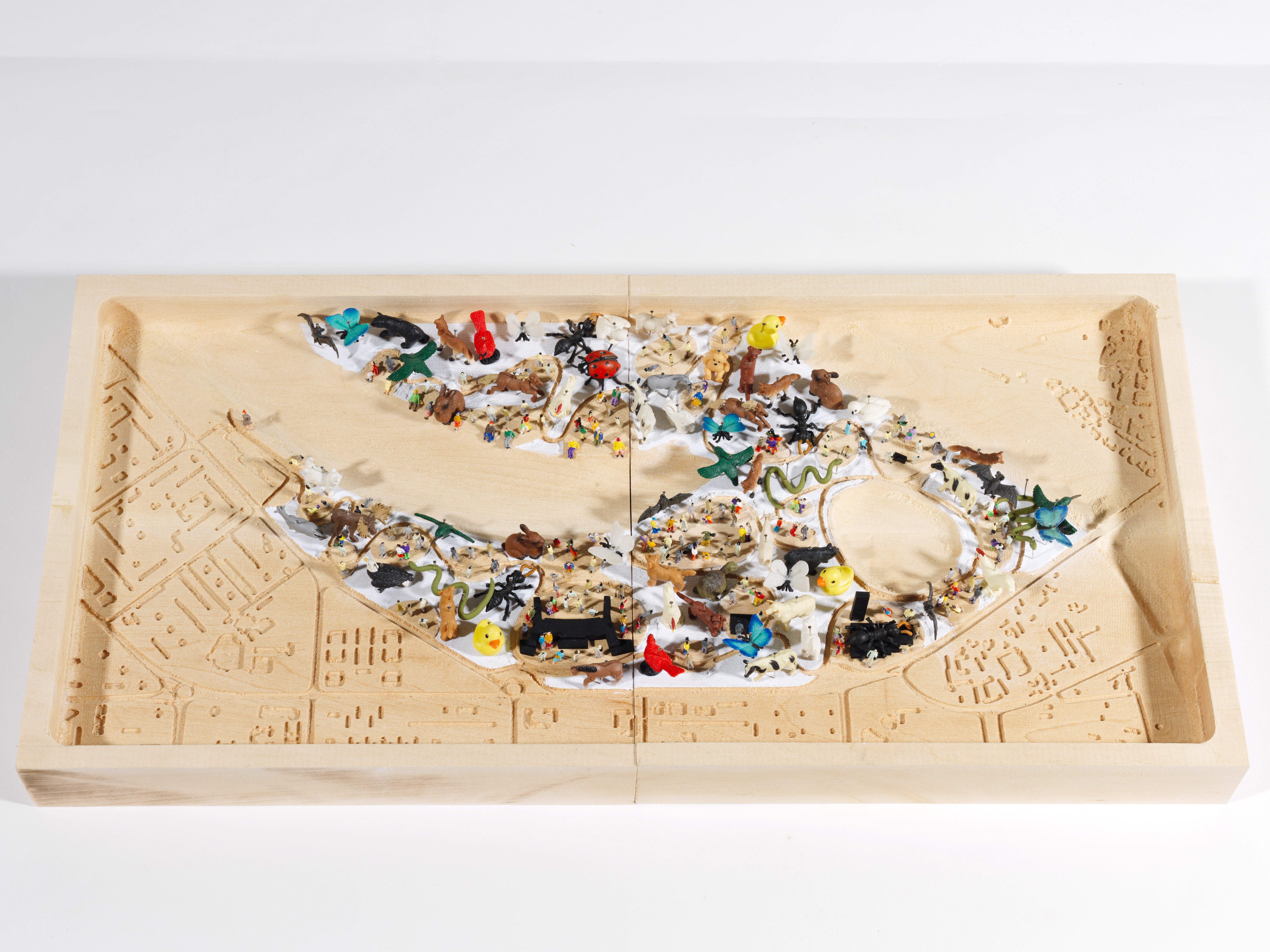
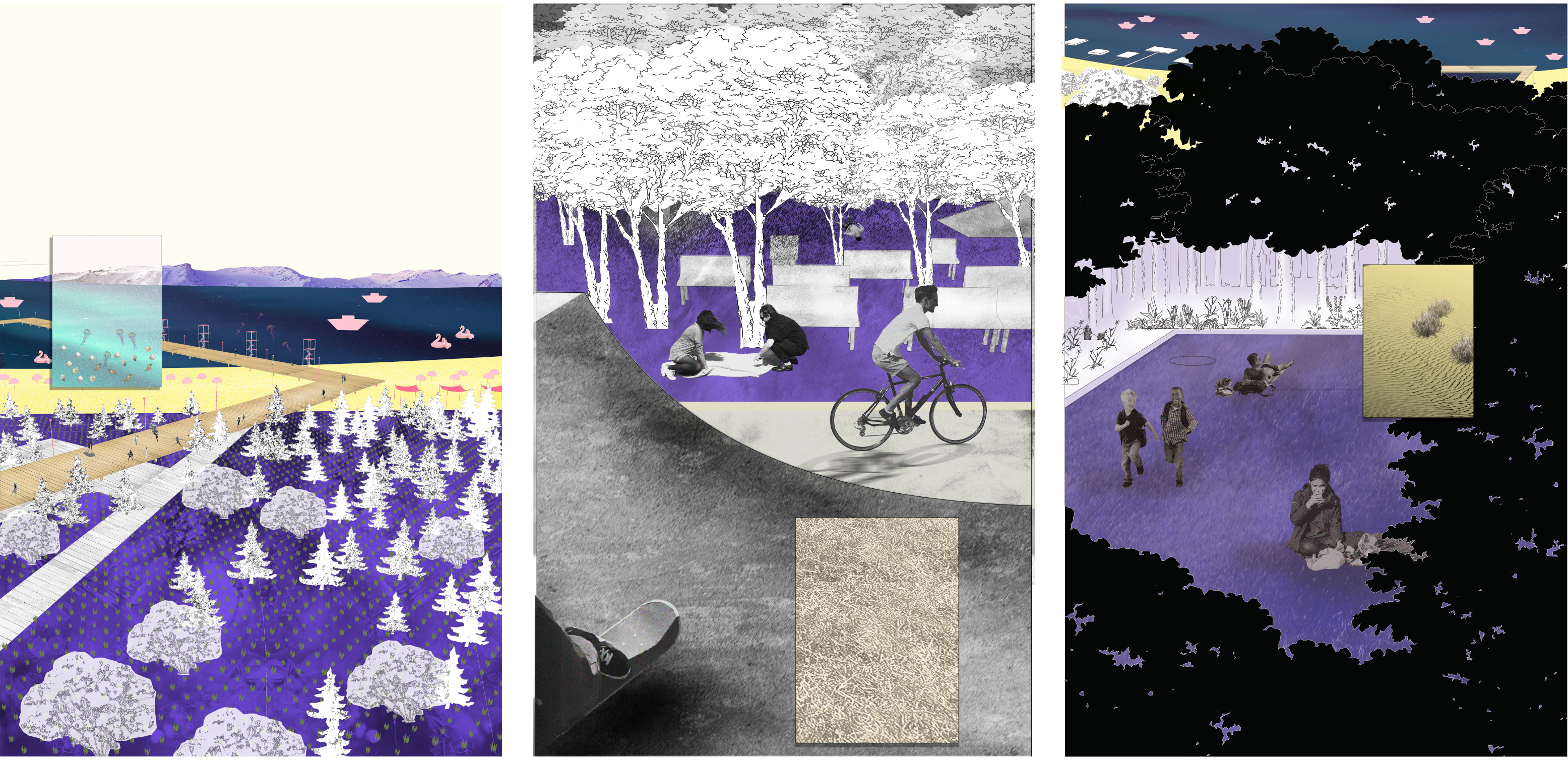
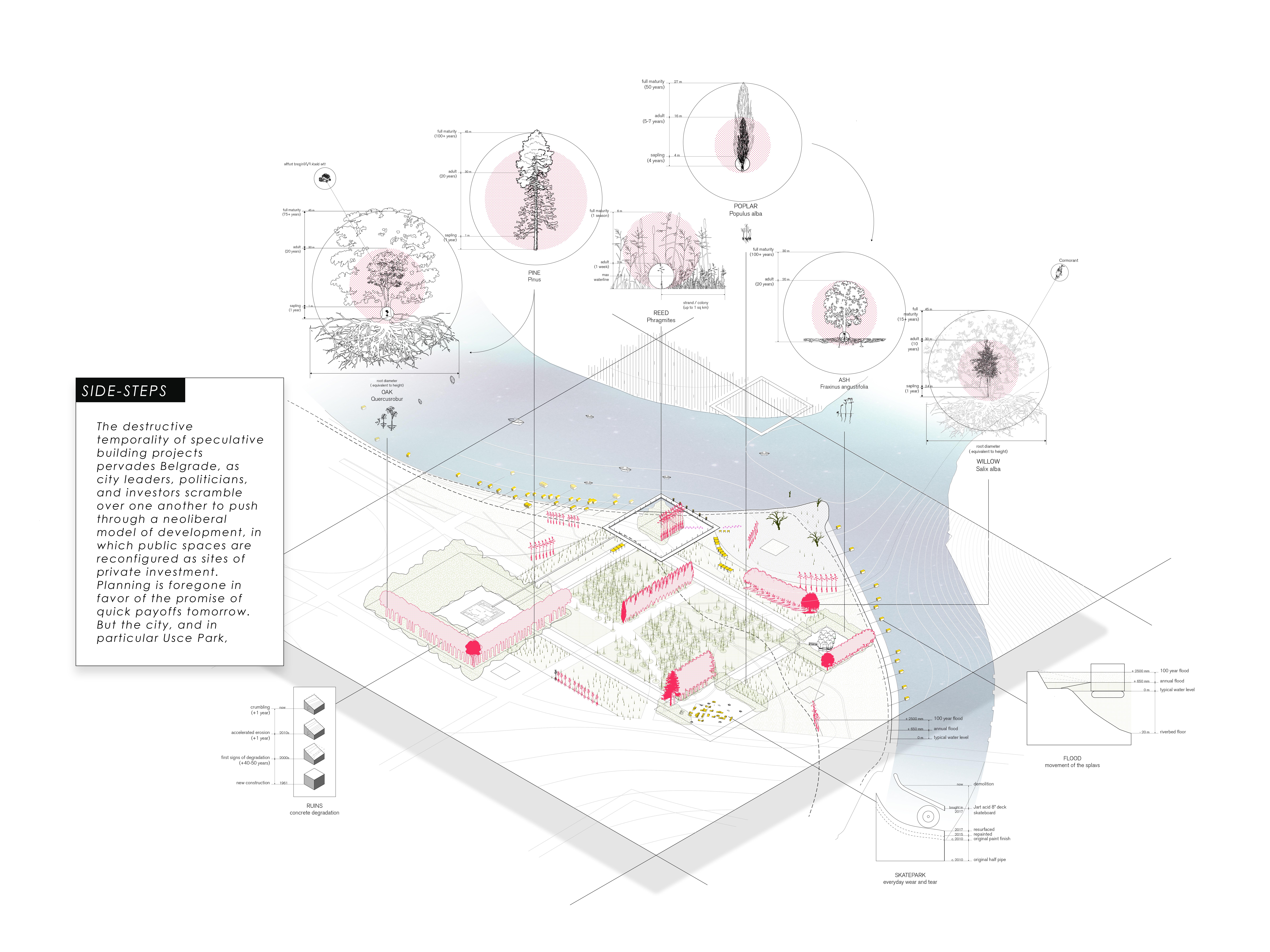

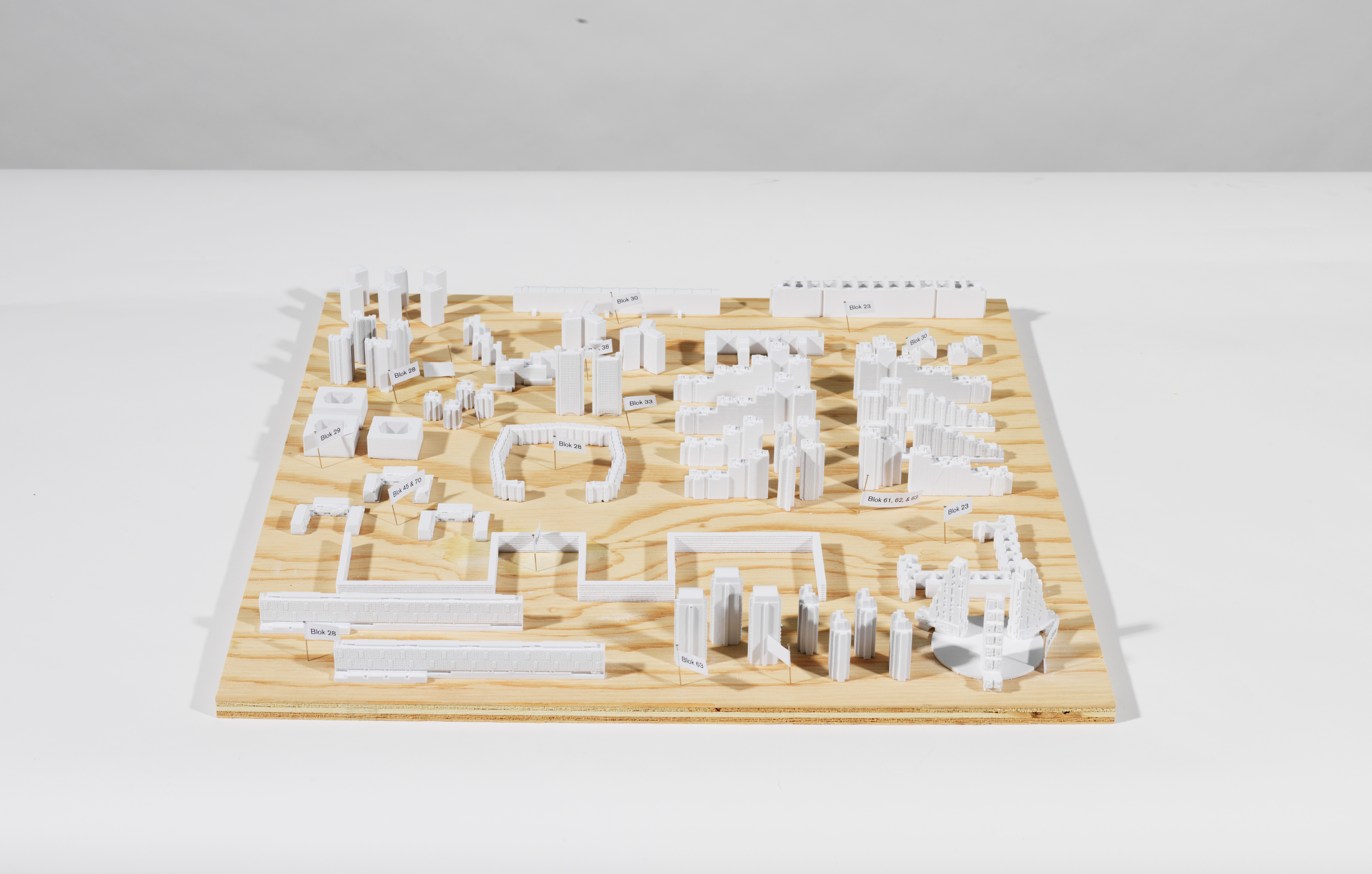

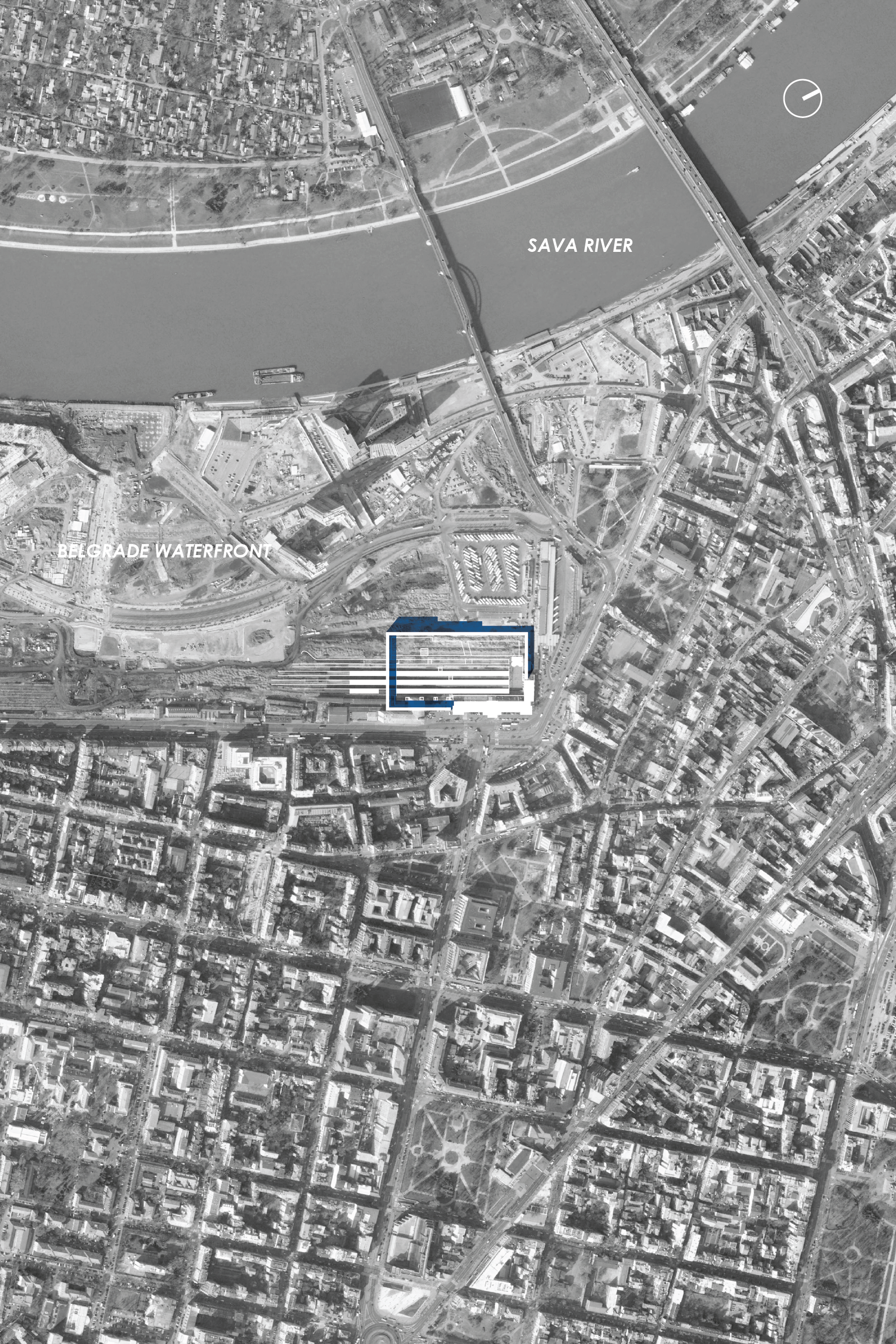
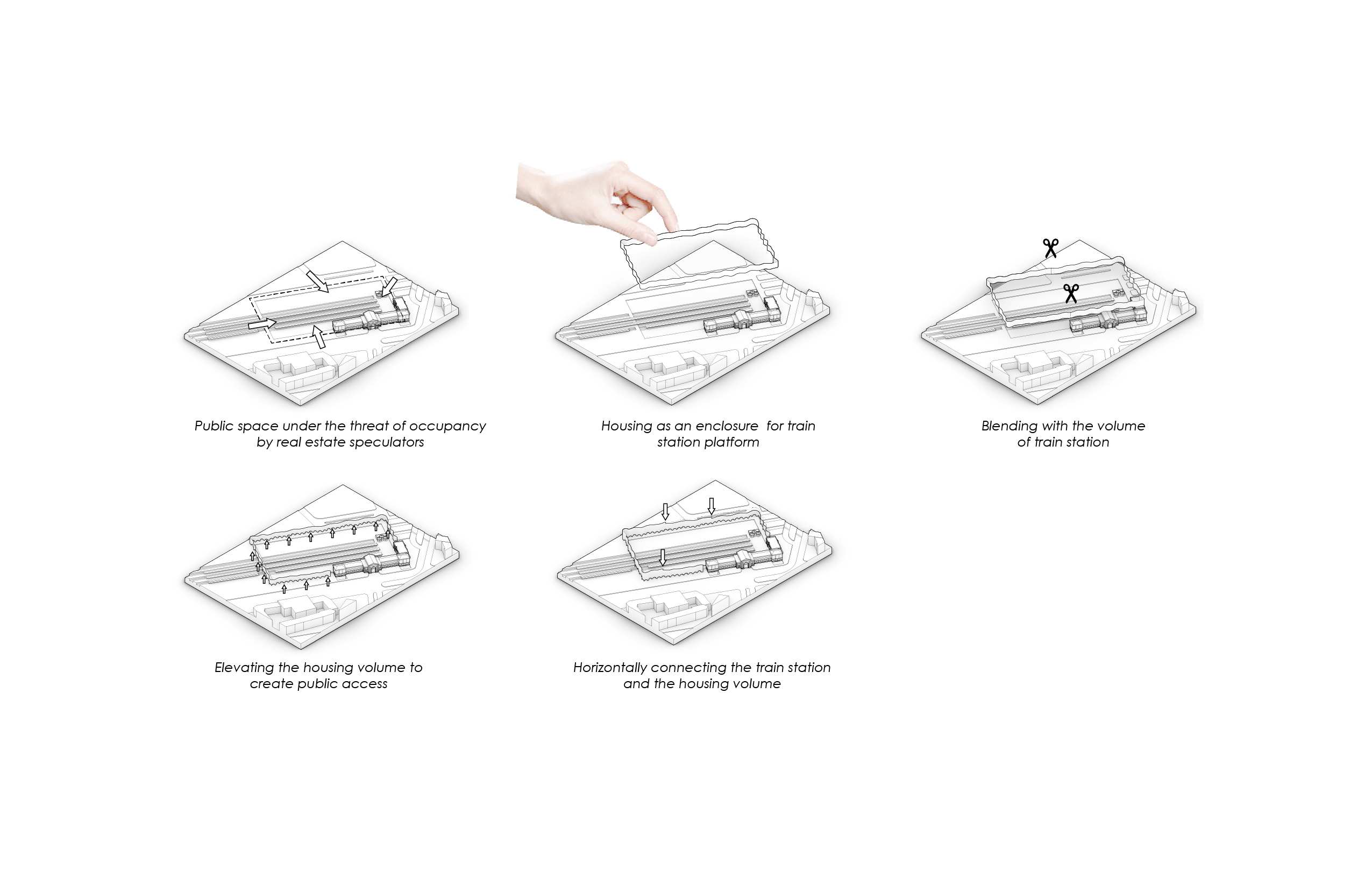
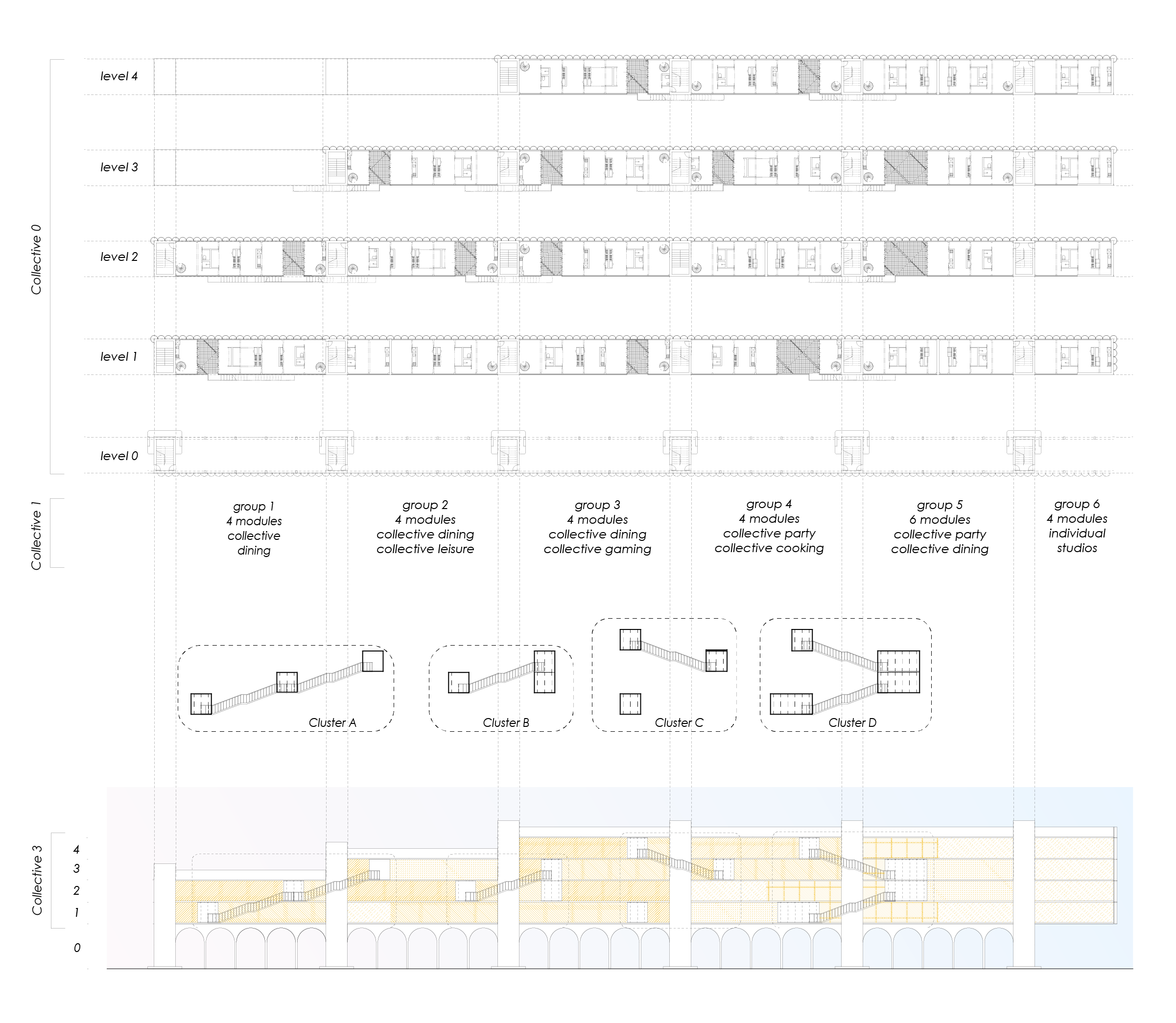
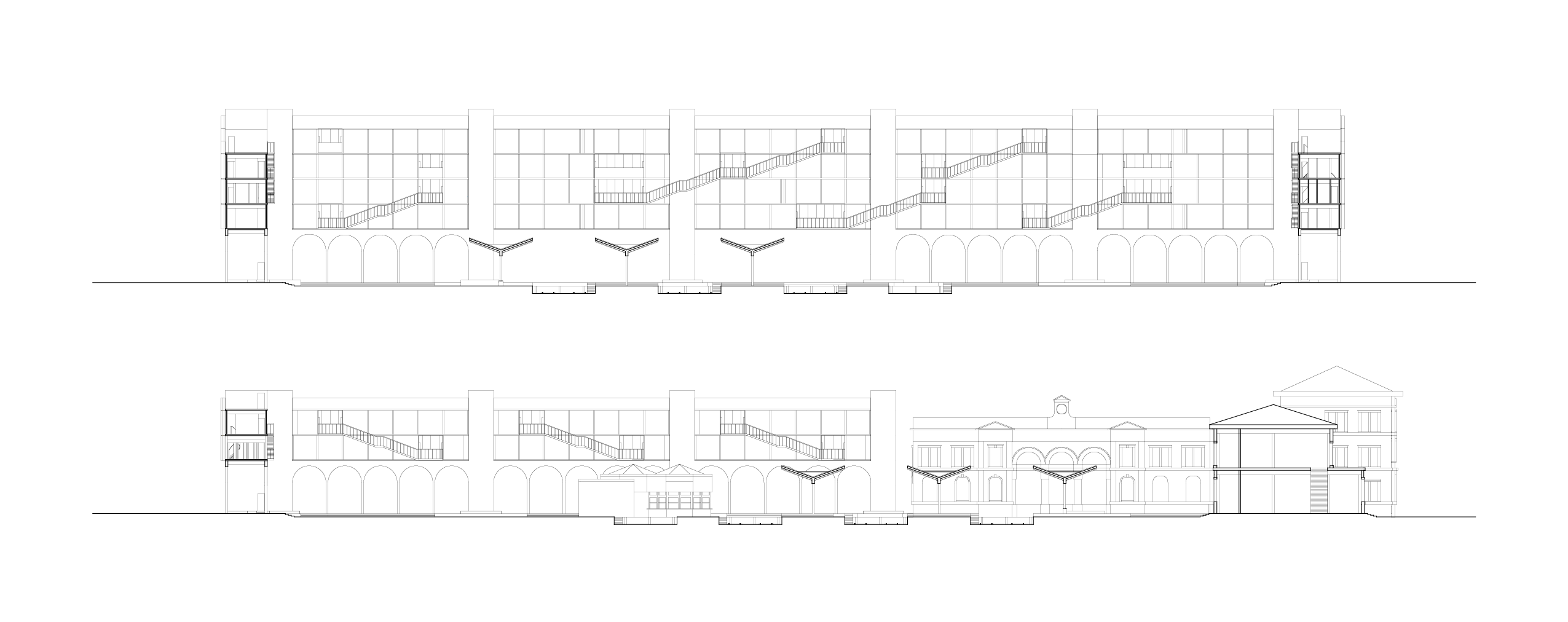

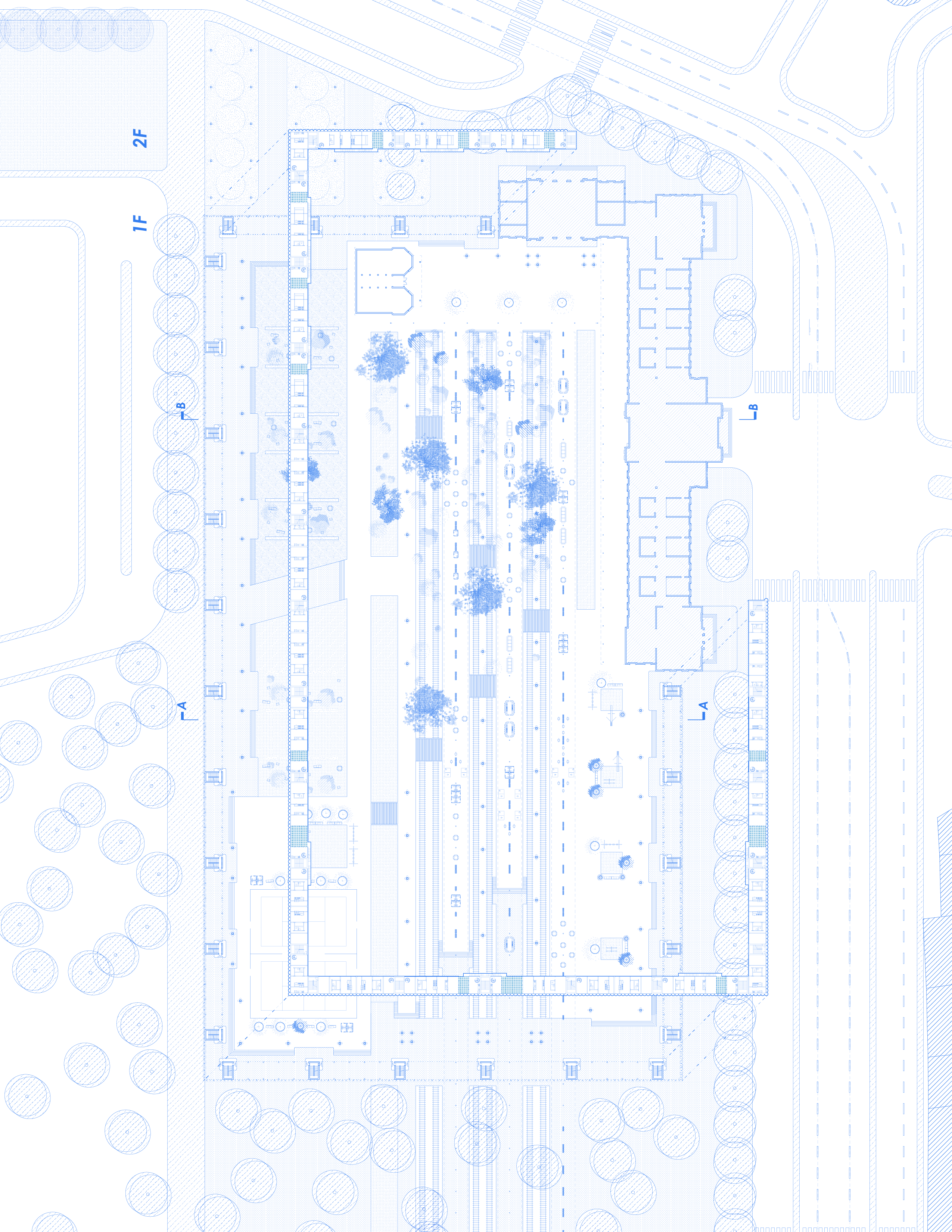
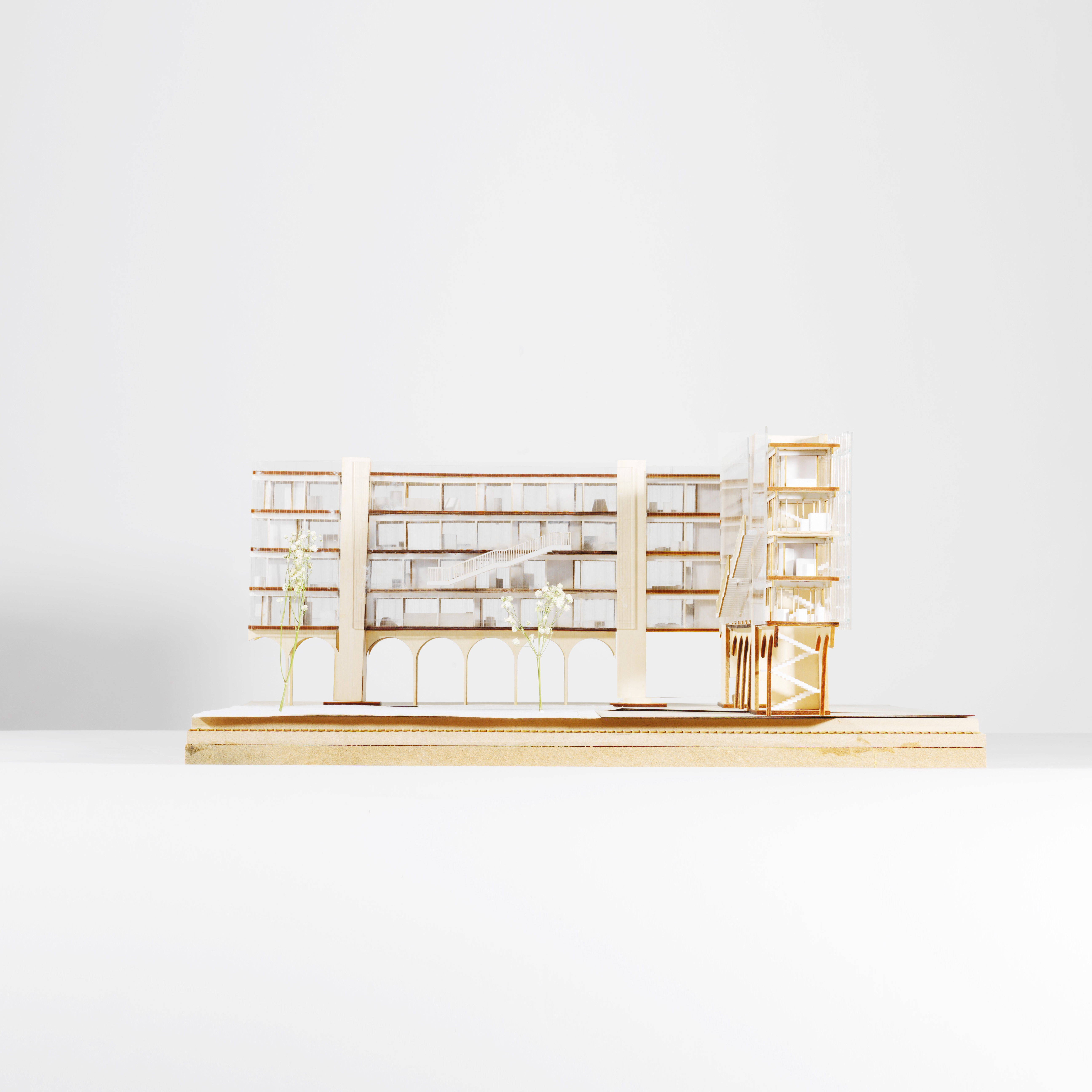
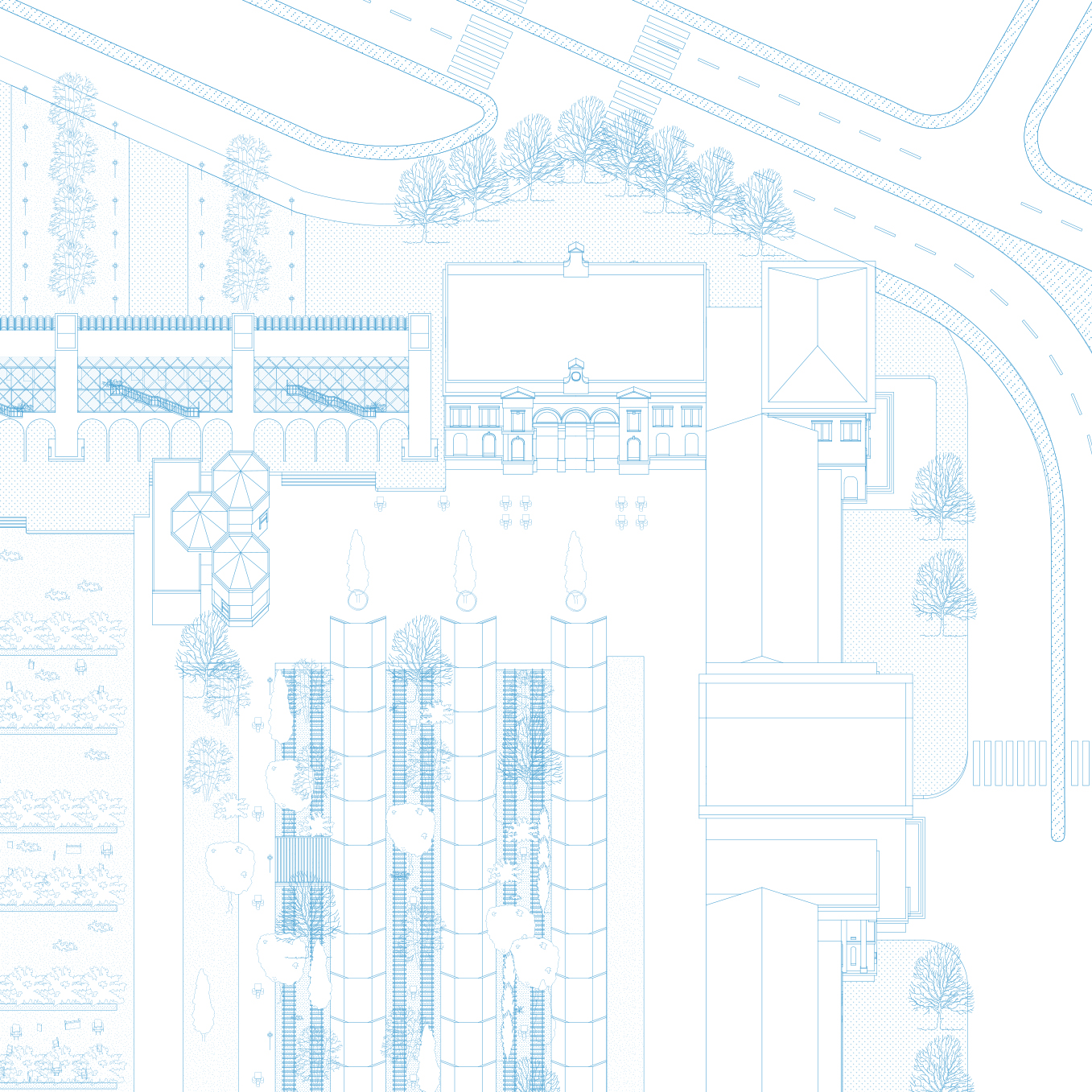

Stakes in the Ground
2019 Spring MIT Option Studio
Site: Belgrade, Serbia
Instructor: Ana Miljacki
Presented in 2019 Seoul Biennale
Collective Arch Studio is a Belgrade-based studio where ten students jointly seek to redefine ‘public goods’ in post-socalism Yugoslavia through reserach, common devices projects, Usce Park competition and collective proposal for housing. To echo the spirit of ‘collective‘, we collaborate with different people through the phases of the studio, hold collective acticities, and co-own the intellectual works we produced. Stakes in the Ground is the final project finished by Yutan Sun and Gabrielle Heffernan, rethinking the character of collective housing as public goods and the protector of public goods by reconstructing the spatial relationship between buildings and public space.
Background
Socialism in Yugoslavia produced the city as self-managed enterprises with individual expression of collective production. One of these products was the construction of the city’s housing stock. Large scale residential projects were built and collectively owned by each enterprise and housed sometimes thousands of people in one site. Due to the transition to a market economy, the concept of social property and common ownership of public goods only functioned until the late 1980s. As the population has continued to grow, the housing stock constructed during the socialist era could no longer support the demand for housing. The stock of public space also continues to decline in the privatization process. Rather than the city focusing on funding the housing of its people, recent development projects express their prioritization of attracting tourists and foreign investors to the city. There is a need for an alternative housing strategy that asserts a preservation of open public space.
Concerns
Belgrade Waterfront is an urban renewal development project headed by the Government of Serbia aimed at improving Belgrade’s cityscape and economy by revitalizing the Sava amphitheater, a neglected stretch of land on the right bank of the Sava river (Wikipedia). “With a mission to bring Belgrade back to the rivers, this project will provide a great living and working space for all* citizens, and will significantly contribute to the economic and touristic development of the capital.” (Belgrade Waterfront website).
However, with the progress of deconstruction and construction, unannounced scenario was brought to the center of the table: Eagle Hills’ total investment in the development is actually EUR 300m, not EUR 3.5bn, yet their narrative boasts of lofty objectives and transparency in this midst of what appears more and more just a marketing project. The promise to serve for all citizens upon the launch of Belgrade Waterfront seems dubious and baseless, and the ongoing project has triggered citywide protests.
On the other hand, the deconstruction of what was once an important site of cultural heritage and public service lays the city in disarray. Standing on the train waiting platforms today, the beginnings of the Belgrade Waterfront project are in the distance. The old has been almost completely erased, while the new has not yet arrived (and probably never will).
Strategy
Stakes in the Ground proposes an alternative strategy for affordable housing to stake claim to land that was once a public good. Rather than completing the demolition of the train station structures marking the landscape, this strategy commemorates the linear public space as a organizing logic for the public park. The thinness of the loop is motivated by a strategy of least building footprint possible for the maximum preservation of openness. The loop continues the urban edge of what will be the train station museum, yet insists on the physical, visual accessibility of the park from any exterior vantage point of the project.